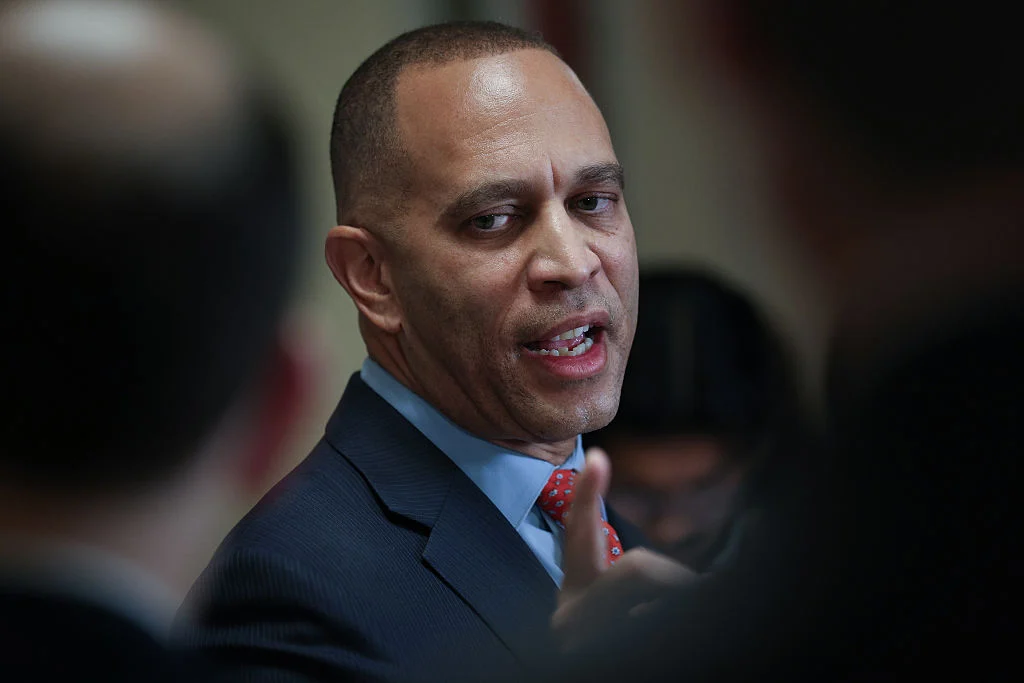Hakeem Jeffries Faces Primary Challenge: A Look at the Political Landscape
U.S. Representative Hakeem Jeffries, the current Democratic leader in the House of Representatives, is navigating turbulent waters as he approaches the 2026 midterm elections. An unexpected primary challenge has emerged from Chi Ossé, a young and ambitious New York City councilman. With this backdrop, the political stakes for both candidates have escalated significantly.
Introducing the Candidates
Jeffries, who has represented New York’s 8th Congressional District in Brooklyn since 2013, has aspirations that go beyond his current role. At 55 years old, he aims to become the first Black speaker of the House, should Democrats reclaim the majority in the upcoming elections. His experience and position within the party give him an edge, but challenger Chi Ossé represents a fresh wave of progressive ideas that resonate particularly well with younger voters.
Ossé, at just 27, is a Democratic socialist known for his alignment with other rising stars in New York politics, including mayor-elect Zohran Mamdani. His grassroots appeal is significant; he is actively engaged in social media dialogues that often go viral, which establishes him as a formidable contender, despite his relative lack of name recognition compared to Jeffries.
The Dynamics of the Democratic Party
The primary challenge arises amidst a climate of division within the Democratic Party. Recent decisions by some Senate Democrats to collaborate with Republicans, notably in ending a historic 43-day government shutdown without extending healthcare subsidies for the Affordable Care Act, have drawn ire from progressive factions. Critics argue that leaders like Jeffries and Senate Democratic Leader Chuck Schumer are failing to meet the urgent demands of their constituents.
Ossé has capitalized on this sentiment, suggesting that mainstream Democrats often divert their attention toward progressive elements rather than focus on addressing Republican actions. His perspective reflects a broader call for the party to shift strategies and prioritize the voices of younger, more progressive members.
Jeffries’ Response to the Challenge
In the wake of Ossé’s announcement, Jeffries’ campaign welcomed the challenge, signaling confidence in his established base of support. A spokesperson for him explained that the leader is focused on pressing issues impacting voters, such as combating corruption and lowering the cost of living. This approach not only maintains his current standing but aims to win back control of the House for what the campaign cites as the “good of the country.”
Polling data appears to favor Jeffries at this stage. An internal poll indicated that he holds a daunting 50-point lead over Ossé among New York voters. Notably, 74% of those polled viewed Jeffries positively, and a significant percentage of respondents indicated they would likely support his re-election.
Ossé’s Grassroots Approach
While Ossé may be trailing in the polls, his strategy focuses on grassroots engagement and social media activism. He believes that older, establishment Democrats tend to prioritize internal party dynamics over confrontations with Republican leadership. “The one party that really does exist in this country is the party of oligarchs,” Ossé stated in an interview, arguing that both major parties are influenced by corporate interests.
This sentiment resonates strongly with younger voters who feel disillusioned by traditional political structures. Ossé’s rising profile and his bold critiques may energize the base that Jeffries has worked to cultivate.
The Future of New York’s 8th Congressional District
As the 2026 elections draw nearer, the political landscape around New York’s 8th Congressional District will undoubtedly evolve with further campaigning and public discourse. The juxtaposition of Jeffries’ experience against Ossé’s progressive fervor illustrates a broader national conversation about the future of the Democratic Party.
In this dynamic environment, how these candidates navigate their campaigns will heavily influence not just their political futures but may also signal the direction in which the Democratic Party aims to move. The stakes are high, not just for these two individuals but for the legitimacy and effectiveness of the party as a whole as it seeks to rally support and navigate through complex societal challenges.



